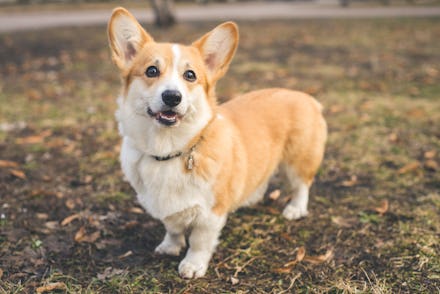How humans have changed dogs' brains

Doggos run the gamut personality-wise, from protective Dobermans, to tenacious Jack Russell terriers, to sweet, derpy bulldogs. It turns out that breeding for these behavioral traits may have shaped our dogs' brains. A study published in the Journal of Neuroscience on September 2 found that brain structure varies from one dog breed to the next, depending on the traits selected in developing each breed.
The research “capitalized on a data trove” of high-resolution MRI scans of dog brains, David Gutman, an associate professor at Emory University School of Medicine and study co-author, tells Mic. The scans, collected by study co-author Marc Kent at the University of Georgia’s College of Veterinary Medicine, showed the brain structures of 62 purebred dogs from 33 breeds whose owners had brought them in for neurological exams but ended up being healthy.
Statistical analyses revealed that the variations in the sizes of some brain regions were greater than what the researchers would have expected due to chance. Gutman’s team considered whether body size, brain size, or skull shape could also account for variations in brain structure, but, again, they were greater than what could be explained by these physical constraints alone.
The researchers identified six brain networks, or “spots of the brain that seem to get bigger or smaller together,” Gutman explains. Each network was associated with a specific set of traits: drive and reward, social interaction, smell and taste, smell and vision, navigation, and fear and anxiety. Gutman and colleagues saw correlations between the structure of these brain networks and the behaviors selected for in each of the American Kennel Club’s breed groups.
For instance, the dog's brain network involved in navigation was proportionally larger than what you’d expect due to random chance in sight hunting breed, which include greyhounds and Weimaraners. Meanwhile, the anatomy of the network involved in vision and smell was proportionally larger in dogs bred to assist the police and military, such as Doberman pinschers and boxers.
But Gutman notes that the dogs in the study were just pets, meaning many didn't do what they were originally bred to do. (Nowadays, you don’t see too many dog parents training their corgis to herd sheep, or their golden retrievers to fetch waterfowl.) “The wiring is still there,” though, Gutman says, citing his cousin’s herding dog, who often nipped his human's ankles, as an example. Presumably, then, if you trained dogs in the behaviors for which they were bred, the variations of specific brain networks from breed to breed would “get even bigger.”
He and his colleagues have begun a follow-up study to analyze brain scans from dogs that actually still do what they were bred to do. In doing so, they’re expanding on the sample size of each breed in the Journal of Neuroscience study, so they can draw conclusions about specific breeds, not just breeding groups.
Through the just-published findings, “we can begin understanding how our brain is structured,” Gutman says. For instance, the joy you and your pupper experience when you do something nice for each other may correlate with the reward pathway in your brains, conserved across several species. Humans and dogs have always shared a special connection, but the findings reveal that the connection runs deeper than you might have originally thought.